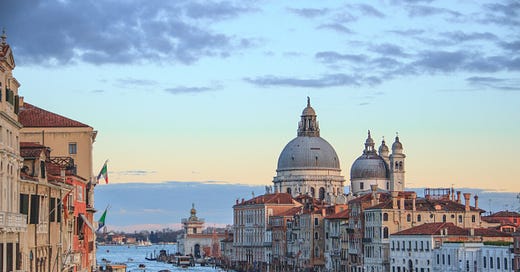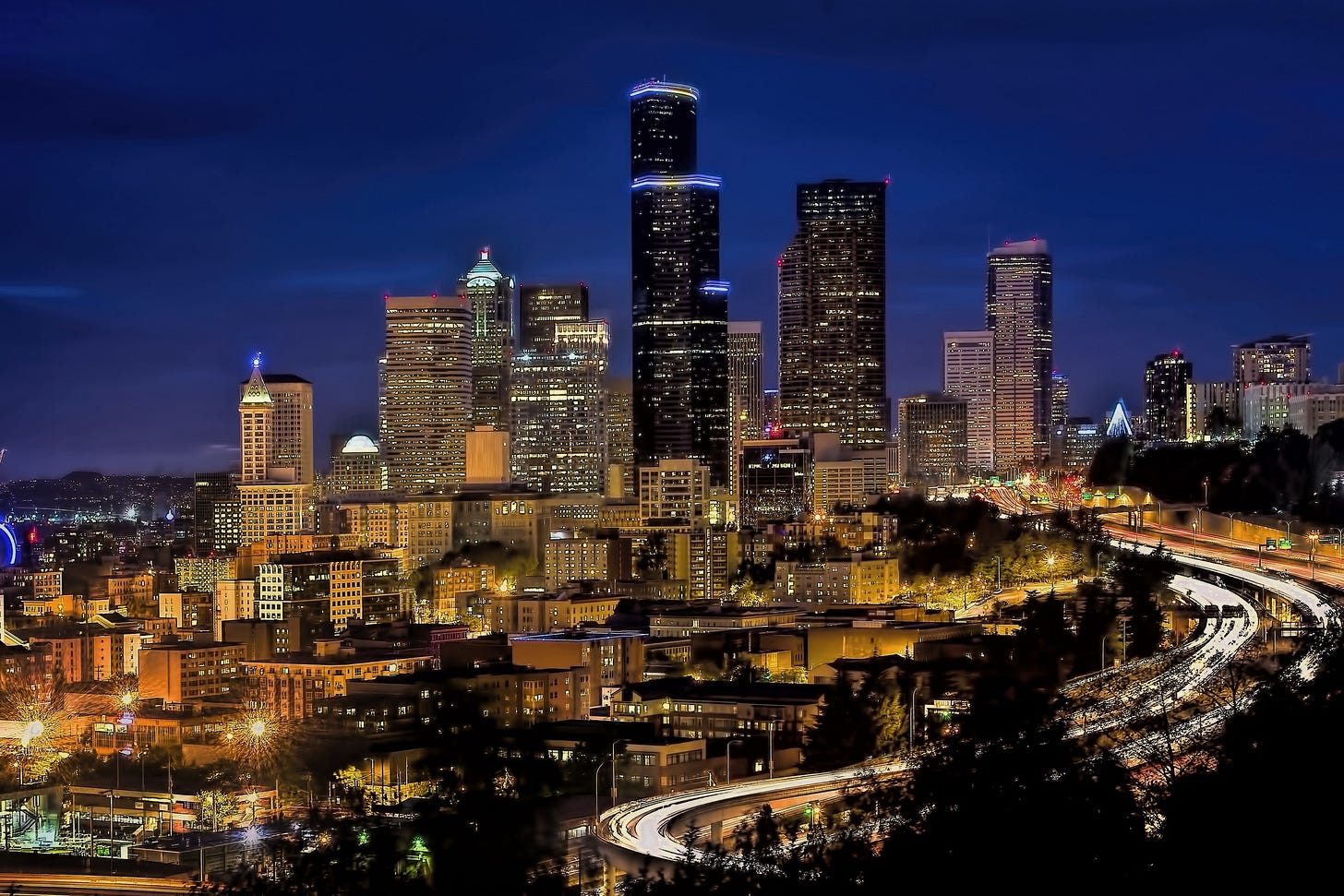Cities are where innovation takes place
Virtually all innovations in human history have been in cities, despite them making a tiny portion of the population. Why?
Make someone’s day: Gift a subscription to your friends and family!
In previous articles, I made the case that we can best understand the nature of human material progress using the concept of the Five Keys to Progress. The Five Keys to Progress are critical because they are the necessary preconditions for a society changing from a state of poverty to a state of progress, and they are actionable in today’s world. In other words, the concept not only helps to understand the world but also how to make it better.
In a previous excerpt, I explained:
Key #1: A highly efficient food production and distribution system. This enables societies to overcome geographical constraints on food production so that large numbers of people can focus on solving problems other than getting enough food to eat
In this excerpt, I would like to explain the second Key to Progress:
Key #2: Trade-based cities packed with a large number of free citizens possessing a wide variety of skills. These people innovate new technologies, skills and social organizations and copy the innovations made by others.
The following is an excerpt from my book From Poverty to Progress: Understanding Humanity’s Greatest Achievement. You can purchase discounted copies of my book at my website, or pay full prize at Amazon.
Other books in my “From Poverty to Progress” book series:
See more articles on Cities:
Book review: "Triumph of the City" by Edward Glaeser
In Triumph of the City, Edmund Glaeser calls cities “our species’ greatest invention.” While this might be a bit of an exaggeration, Glaeser is onto something important. Most people rarely stop to consider the importance of cities to human history.
City dwellers are invariably wealthier than residents in rural areas, often dramatically so. This is because of the city’s unique ability to foster innovation and diffusion. Humans as individuals are undoubtedly more intelligent than animals. But the differences in intelligence between humans and chimps or dolphins are not enough to account for how far humans have diverged from other animals in their evolution.
It is only when large numbers of humans live and work in close geographical proximity that humanity’s greatest advantage emerges. Increased density of interaction between humans creates a network of skills and social organizations that is far beyond what any other species has been able to achieve.
Humans in large groups have the ability to cooperate, specialize, learn new skills, copy ideas, test those ideas and constantly improve them based on feedback from other humans. While humans in small groups tend to use the same technology for generations, humans in large groups can become a network that churns out new ideas and tests them for success in a rapid manner. And when those large groups of people are in constant contact with other large groups of people, progress is even more rapid.
The large, dense populations within cities also naturally promote specialization, which leads to a broader skills base. A small town might have one restaurant. Because it is the only restaurant in the area, it must serve a cuisine that is acceptable to most of the town.
As the population size of the city increases, the number of restaurants naturally increases as well. But something even more important takes place. When there are a dozen restaurants in a town, each one of them can cater to the tastes of a different segment of the population. One can serve Chinese cuisine, one can serve pizza and another can specialize in breakfast. Increase the population size to millions and suddenly you can have thousands of restaurants, specializing in increasingly narrow markets. An increase in population promotes increased specialization. And each specialization requires a different set of skills.
As we will see later, technological innovation is exponential, because it is partly based upon the number of technologies already in existence. The larger the number of technologies, the larger the number of potential combinations for new technologies in the future.
But technologies do not combine themselves. Humans have to do that. And while isolated individuals can try a certain number of combinations, a large number of people living in close proximity are far more likely to try all possible combinations that their current technology base allows. And because technologies can only come into being when there are people with the necessary skills to make that happen, those people need to have a wide variety of skills.
Cities matter because they concentrate large numbers of people into a small area. Whereas rural areas of the past had low-density populations with people focused on skills related to growing food, cities had high-density populations with people specializing in a wide variety of occupations, each with unique skills, technologies and social organizations.
And these urbanites were in constant daily contact with each other, giving them the ability to copy from a wide variety of people. Cities enabled people to view how other people worked, view their technology and perhaps share ideas. Most of those people who they shared with would be in their family or occupation, but some might be strangers engaged in other occupations.
Cities have always been havens of freedom. This is important because free people enjoy the benefit of their skills and innovations, while slaves have no incentive to innovate. If a slave innovates something new, only the master benefits. While most pre-modern societies had some form of forced labor (slavery, serfdom, peonage, etc.), trade-based cities make use of free labor in the marketplace. Forced labor could simply not compete with free labor in occupations that require skill, innovation and learning.
But not all cities are created equal. Some cities innovate at a far higher rate than others. As more and more trade-based cities evolved, some of them became the locus of emerging technologies. Important cities in history include those in Northern Italy during the Middle Ages (Venice and Florence were the most important), Bruges and Antwerp in modern-day Belgium, Amsterdam from about 1580-1670, London, New York City and today’s Silicon Valley.
These trade-based cities have played an enormous role in technological and organizational innovation because they had heavy concentrations of people with skills related to emerging technologies of their day. For almost 1,000 years, these cities have been the engines of progress.
Except for innovation in the field of agricultural technologies and the extraction of minerals, virtually all innovation has come from cities. This is quite extraordinary, given how few people lived in cities until recently. For a good 100,000 years, cities did not exist. Hunter-Gatherers congregated in seasonal camps or fishing villages when and where food sources were highly concentrated, but they had at most a few hundred inhabitants.
Even after cities evolved, a very small proportion of the population lived within them. In most Agrarian societies, cities with a population of over 10,000 inhabitants made up less than three percent of the population. And compared to modern standards, a “city” with a population of 10,000 would be considered more of a village today.
In the next article in this series, I will discuss the Third Key to Progress: Decentralized political, economic, religious, and ideological power.
The above is an excerpt from my book From Poverty to Progress: Understanding Humanity’s Greatest Achievement. You can purchase discounted copies of my book at my website, or pay full prize at Amazon.
Other books in my “From Poverty to Progress” book series:
See more articles on Cities:
Book review: "Triumph of the City" by Edward Glaeser







